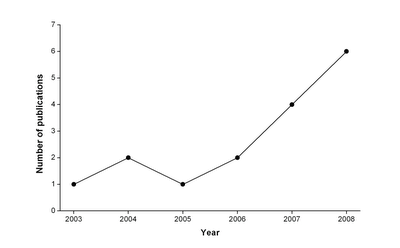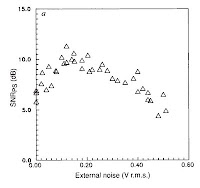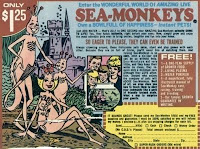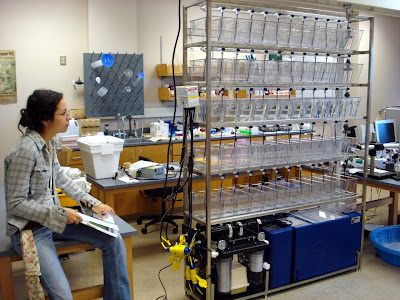
Neurobiology is fundamentally about cellular communication. Cells communicate in several ways, but in neurons, the primary way that neurons communicate with each other across synapses. Synapses are, strictly speaking, the physical gaps between neurons, but the term is often loosely expanded include the cellular machinery to send and receive signals across that gap. If you understand synapses, you're a long way towards understanding brains and all they do.
Crayfish have made a big impact on our understanding of synapses. In 1976, Harold Atwood wrote:
The largest part of our available knowledge of the mechanisms of chemical synaptic transmission comes from work on vertebrate (especially frog) neuromuscular synapses. Probably the synapses between the giant fibers of the squid would rank second in significance, while third place would go to the neuromuscular synapses of crustaceans.
There were many reasons why the connections between neurons and muscles in crustaceans made such a big impact on our understanding of synaptic physiology. Detailing them all would take several posts, but it sort of boils down to three factors.
First, the muscle cells are huge.
Second, there are only a few neurons connecting to muscles.
Third, the connection between neurons and muscles in crayfish is
not like the connection between neurons and muscles in mammals.
If you ever took a basic physiology course, you probably learned two things: that neurons only excite muscles, and that how many neurons are fired controls how much a muscle contracts. This is true for mammalian skeletal muscle, but it's
not true for crustaceans.
In crustaceans, some neurons inhibit muscles, and the pattern of neurons firing plays a much bigger role in determining how much a muscle contracts. Consequently, synapses between neurons and muscles in crustaceans are much more like synapses in brains than the highly specialized synapses between neurons and muscles in mammalian skeletal muscle. Mammalian muscle synapses are, to be blunt, quite boring.
All this is preamble to the actual discovery mentioned in the title of this post.
Neurons continually communicate with each other, but they don't necessarily act on that communication. Neurons are the kings of filtering out mixed messages. Typically, a neuron receives a conflicting mess of excitatory and inhibitory signals. By adding them all up, it determines whether to fires (sending a signal to the next neuron) or not. Thus, inhibition occurs on the receiving end, which is said to be postsynaptic.
Using crayfish claw muscles, Josef Dudel and Steve Kuffler found an entirely different way that neurons can inhibit signals. Rather than sending an inhibitory signal to a neuron directly, they found one neuron could "intercept" a signal that another neuron had sent before it reached its recipient.
The "interecepting" inhibitory neuron accomplished this by releasing inhibitory neurotranmitter not onto the recipient neuron, but by releasing the inhibitory chemical onto the sender, right at the very end, just as the signal is about to release the sender's neurotransmitter.
Of course, as with all interceptions, timing matters. If the interceptor released its inhibitory signal too early (shown in A) or too late, there was little inhibition. But if the interceptor released its signal a couple of milliseconds before the sender (shown in B), it could almost entirely knock out the signal from the sender to the recipient.
This mechanism of
presynaptic inhibition was later found to fairly widespread. It occurs in vertebrates, and in synapses within brains. It wasn't just a quaint little crayfish curiosity.
ReferencesAtwood HL. 1976. Organization and synaptic physiology of crustacean neuromuscular systems.
Progress in Neurobiology 7: 291-391.
http://dx.doi.org/10.1016/0301-0082(76)90009-5Dudel J, Kuffler SW. 1961. Presynaptic inhibition at the crayfish neuromuscular junction.
Journal of Physiology 1
55: 543-562.
http://jp.physoc.org/cgi/reprint/155/3/543

 Additional, 10 January 2009: I just realized that the graph I posted is slightly wrong. I somehow miscounted the number of papers in 2007. I know, I know... "He can't count to five?" Sorry. But in science, the best thing is always admit error and try to fix it.
Additional, 10 January 2009: I just realized that the graph I posted is slightly wrong. I somehow miscounted the number of papers in 2007. I know, I know... "He can't count to five?" Sorry. But in science, the best thing is always admit error and try to fix it.















.gif)
















+cover.gif)














.gif)




